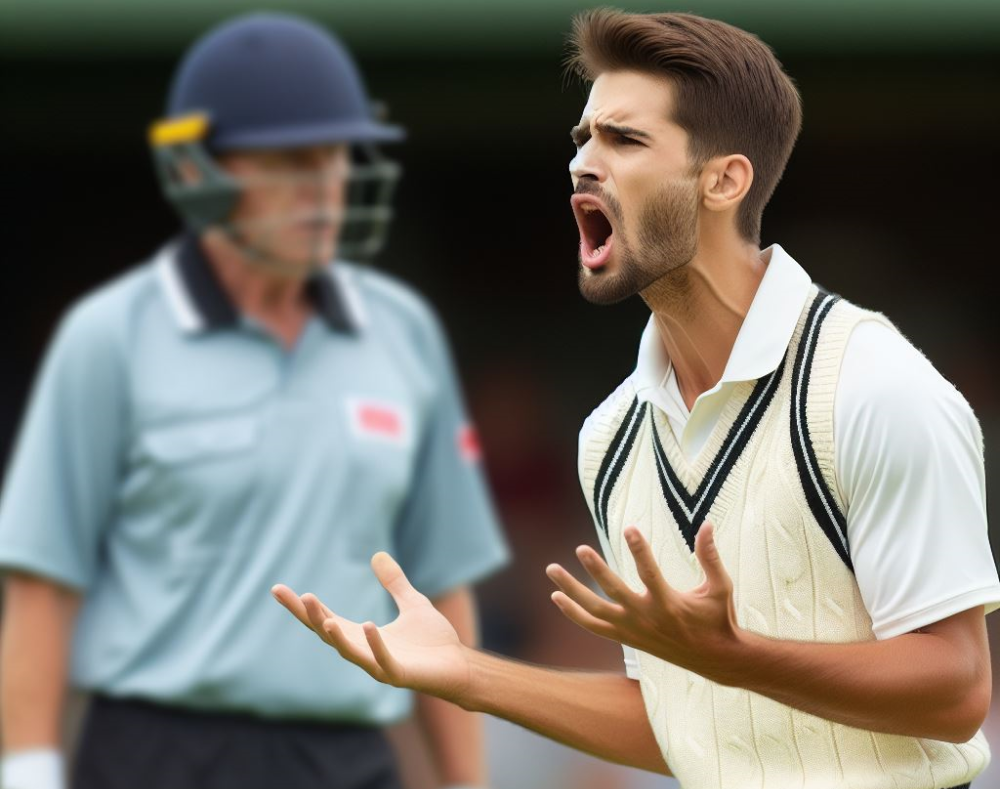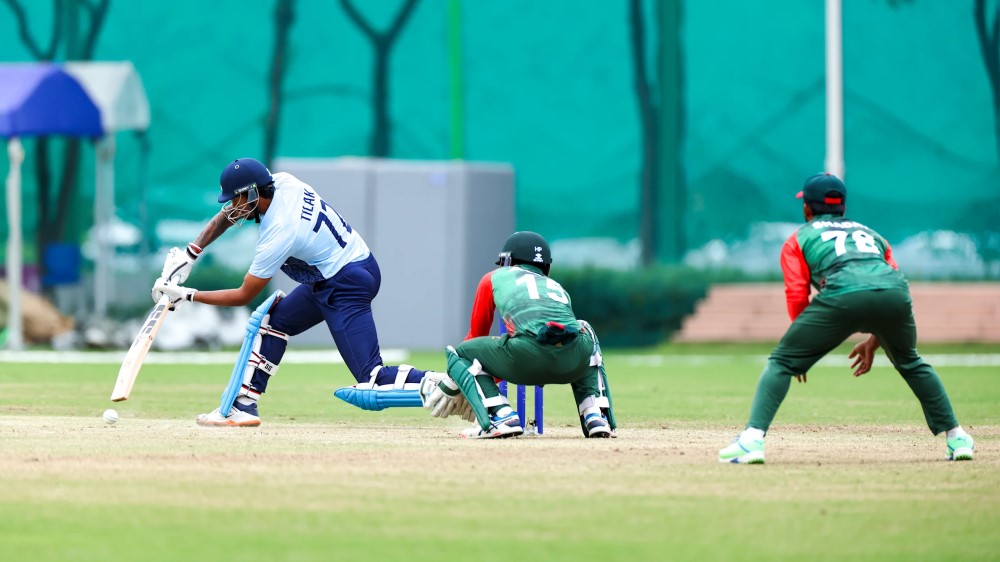
What Is a No ball And a Wide Ball
Embarking on a journey through the intricacies of cricket, it’s crucial to grasp the fundamental concepts that shape the dynamics of the game. In the realm of bowling, two terms frequently echo across the cricket field, influencing match outcomes and player strategies — the elusive “no-ball” and the strategic “wide ball.”
A no-ball is a delivery that breaches the rules set by the cricketing authorities, leading to a significant turn of events on the pitch. Whether it’s an overstepping of the popping crease, an illegal bowling action, or a front-foot infringement, a no-ball is a pivotal moment that can alter the course of a match.
Understanding the nuances of what constitutes a no-ball is essential for players, umpires, and enthusiasts alike.
On the flip side, a wide ball is a strategic move by the bowler to gain an advantage. It occurs when the ball is delivered so far from the batsman that it cannot be played with a proper cricket shot. Umpires closely monitor the positioning of the bowler and the trajectory of the ball, ensuring that the delivery remains within the specified limits.
A wide ball results in an extra run for the batting side, providing them with a slight edge in the ongoing battle between bat and ball.
Delving into the technicalities of these bowling infractions adds layers of excitement to the cricketing spectacle. From the perspective of the bowling side, a well-executed delivery can dismantle the opposition’s batting prowess. Conversely, a mistimed release or an overzealous approach can lead to the unfavorable declaration of a no-ball or a wide ball.
These terms aren’t confined to the professional arena; they resonate across cricketing communities worldwide. Aspiring cricketers hone their skills, ensuring precise footwork and controlled deliveries to avoid the dreaded no-ball.
Similarly, bowlers strategically dance on the edges of legality, attempting to force the batsman into committing errors that result in wide balls.
In this exploration of the cricketing lexicon, we unravel the mysteries of the no-ball and wide ball, shedding light on their impact on the ebb and flow of the game.
From the technical aspects scrutinized by umpires to the strategic maneuvers employed by bowlers, each delivery becomes a nuanced dance that contributes to the rich tapestry of cricketing history.
Join us as we delve deeper into the world of no-balls and wide balls, understanding the pulse of the game through these pivotal elements.
What is a “No-Ball” in Cricket?

Discover the world of cricket and unravel the mysteries behind the infamous “No-Ball“. Delve into the definition of this cricketing term and explore the common reasons that lead to a “No-Ball” being called.
Get ready to dive into the exciting realm of cricket rules and gain a deeper understanding of this pivotal aspect of the game. Brace yourself for an enlightening journey through the “No-Ball” phenomenon in cricket. Let’s play ball!
Definition of a “No-Ball“
A “no-ball” in cricket is a type of illegal delivery that results in one run being awarded to the batting team. It occurs when the bowler oversteps the popping crease or delivers the ball above waist height. The umpire calls a “no-ball” by extending their arm horizontally.
The batsman cannot be dismissed off a “no-ball” except for a run-out. The batting team also gets an additional run from the delivery.
“No-balls” provide scoring opportunities as the batsman cannot be dismissed without scoring runs. It is important for bowlers to avoid “no-balls” to maintain control over the game.
The definition of a “No-Ball” is a type of illegal delivery in cricket that results in one run being awarded to the batting team.
Common Reasons for a “No-Ball” in Cricket
Common reasons for a “no-ball” in cricket, such as overstepping the popping crease and not keeping the back foot grounded behind the crease, can lead to additional runs for the batting team and reduce the bowler’s effectiveness.
Illegal bowling actions, like throwing or throwing actions deemed illegal, can also result in a no-ball. Additionally, if the delivery is above waist height, it will be called a no-ball.
These common reasons for a no-ball in cricket highlight the importance of maintaining proper foot placement and adhering to the rules to avoid penalties.
What is a “Wide Ball” in Cricket?

In the world of cricket, there’s a peculiar term that often leaves fans scratching their heads: the “Wide Ball.” Today, we’ll explore the ins and outs of this enigmatic rule and shed light on its definition.
We’ll also uncover some common reasons why a “wide ball” can be awarded during a match.
So, grab your cricket gear and get ready to dive into the fascinating realm of this intriguing aspect of the game.
Definition of a “Wide Ball“
A “Wide Ball“ in cricket is a delivery that is bowled outside the batsman’s reach on the leg side or off side. It is considered a penalty for the bowler and results in an extra run being awarded to the batting team.
A “wide ball“ is when the ball passes the batsman out of their reach, as judged by the umpire standing behind the wickets.
Common reasons for a “wide ball“ can include the ball being bowled too wide or the bowler not maintaining a straight line while bowling.
A “wide ball” can have an impact on the game by giving the batting team an advantage in terms of scoring opportunities.
Common Reasons for a “Wide Ball” in Cricket
- A “Wide Ball” in cricket occurs when the bowler delivers a ball that is too wide for the batsman to reach. A common reason for a “Wide Ball” is inaccurate bowling – the bowler fails to pitch the ball within the acceptable width as defined by the umpire.
- Another common reason for a “Wide Ball” is miscommunication between the bowler and fielders. If the fielders are positioned incorrectly, it can cause the bowler to bowl the ball wide.
- Tactical bowling is also a common reason for a “Wide Ball.” In this case, the bowler intentionally bowls wide to prevent the batsman from hitting the ball easily.
To avoid being penalized with a “Wide Ball,” bowlers need to practice accuracy in their delivery. They should also communicate effectively with their fielders to ensure they are in the correct positions.
Differences between “No-Ball” and “Wide Ball“

Discover the intriguing dissimilarities between a “no-ball” and a “wide ball” in the cricketing realm. Unravel the secrets behind the potential advantages these deliveries hold for the batsmen and delve into the scoring opportunities they present.
Brace yourself for an exploration of the nuances surrounding deliveries outside the batting crease and the strategic maneuvers employed by the players in response.
Get ready to experience the thrill of dissecting the finer details that set these two types of deliveries apart.
Delivery Outside the Batting Crease
A delivery outside the batting crease in cricket occurs when the bowler’s front foot lands in front of the crease while releasing the ball. This results in an illegal delivery and the umpire calls a no-ball. The table below showcases the impact of a delivery outside the batting crease:
- Batsman’s advantage: The batsman gets a chance to score runs without the risk of getting out.
- Batsman’s disadvantage: The batsman may find it harder to play a delivery outside the crease accurately.
- Bowling team’s advantage: The fielding team gets an extra delivery added to the over.
- Bowling team’s disadvantage: Extra runs can be scored off a no-ball, potentially increasing the batting team’s total.
Batsman’s Advantage
Understanding the batsman’s advantage is essential when analyzing the differences between a “No-Ball” and a “Wide Ball“ in cricket. It is crucial to consider the following in relation to the batsman’s advantage:
- In terms of advantage to the batsman, a “No-Ball” does not offer any direct chance of dismissal, except for a run-out.
- In contrast, a “Wide Ball” grants an advantage to the batsman by adding an extra run to the team’s total and allowing them to switch ends.
- A “Wide Ball” presents an opportunity for the batsman to score runs without even making contact with the ball.
- When it comes to a “No-Ball,” the batsman’s advantage is limited as they cannot be caught or stumped unless they attempt to take a run.
- Both types of deliveries are signaled by the umpire, and the bowler may face penalties depending on the nature of the infringement.
Recognizing the significance of the batsman’s advantage is vital for analyzing the impact of these deliveries on the game. It ensures fairness and enhances the strategic aspects of cricket.
During the ICC Cricket World Cup in 2019, the batsman’s advantage was exemplified when Trent Boult of New Zealand bowled a “No-Ball,” enabling England’s Ben Stokes to score six runs at a crucial moment in the final match.
This dramatic turn of events had a considerable influence on the game’s outcome and emphasizes the importance of comprehending the batsman’s advantage in cricket.
Scoring Opportunities
Scoring opportunities in cricket can arise by strategically playing the game and taking advantage of specific situations during the match. Here is a table that showcases various scoring opportunities in cricket:
- Boundaries: Hitting the ball to or over the boundary line for 4 or 6 runs.
- Singles: Scoring 1 run by running between the wickets.
- Doubles: Scoring 2 runs by successfully running between the wickets.
- Overthrows: Additional runs scored when a fielder’s throw misses the stumps.
- Extras: Runs scored through no-balls, wide balls, byes, or leg byes.
By comprehending these scoring opportunities, teams can effectively strategize to maximize their run rate and ultimately secure victory in the game.
Impact of “No-Ball” and “Wide Ball” on the Game

When it comes to cricket, the impact of “no-ball” and “wide ball” calls on the game cannot be underestimated. These calls have significant consequences for both the bowling and batting teams. Here are some key points to consider:
- No-ball: An illegal delivery that occurs when the bowler oversteps the popping crease or violates other delivery rules. When a no-ball is called, the batting team benefits with a free hit, ensuring that the batsman cannot be dismissed except in the case of a run-out.
- Wide ball: A wide ball is delivered when it is beyond the batsman’s reach. This results in an extra run being awarded to the batting team, and the ball is re-bowled. These wide balls also provide scoring opportunities for the batsmen, which aids the batting team in boosting their overall score.
It is important for bowlers to avoid unnecessary no-balls and wide balls in order to maintain their team’s chances of winning the game. The impact of these calls can have a direct influence on the final outcome of the match.
How are “No-Balls” and “Wide Balls” Called and Punished?

Discover the ins and outs of how “no-balls” and “wide balls” are determined and penalized in cricket. From the umpire’s discernment to the consequences imposed, this section delves into the process of calling and punishing these infractions.
Uncover the intricacies of umpire’s calls for “no-balls” and “wide balls,” as well as the fascinating concept of free hits.
Get ready to unravel the mysteries behind these cricketing terms and gain a deeper understanding of the game.
Umpire’s Call for “No-Ball“
In cricket, the Umpire’s Call for “No-Ball” plays a crucial role in determining whether a delivery is a “no-ball” or not. The umpire’s call for a “no-ball” is based on a set of rules and guidelines.
They closely monitor the bowling action, specifically focusing on the foot placement of the bowler. If the bowler oversteps or has any other illegal foot positioning, the umpire signals a “no-ball“.
This results in the batting team being awarded an additional run, and the batsman cannot get out on that delivery. The Umpire’s Call for “No-Ball” ensures fair play and adherence to the rules in the game of cricket.
Umpire’s Call for “Wide Ball“
The decision of the umpire to declare a “wide ball” in cricket is when the bowler delivers the ball outside the allowable range for the batsman to make a play. This delivery is considered illegal and results in an additional run being awarded to the batting team.
The umpire signals this call by extending his arms horizontally. If the delivery goes beyond a designated area known as the wide line, determined by the batsman’s position, it will be classified as a wide ball.
This ruling gives the batsman the chance to score without having to attempt a shot.
Free Hits
A “free hit” is a unique opportunity given to the batsman after a “no-ball” or a “wide ball” is bowled in cricket. Free hits allow the batsman to play the next delivery without the fear of getting out through most dismissal methods. It is a great advantage for the batting side as it allows them to score freely without any risk of dismissal.
The ball must be a legal delivery, meaning no further no-balls can be called. The batsman can be dismissed only through a run-out.
Fact: Free hits were introduced in cricket to discourage bowlers from bowling illegal deliveries and to increase the entertainment value of the game.
Frequently Asked Questions
What are the consequences of a no-ball?
When a no-ball is bowled, one run is added to the batting team’s score, and the number of ways in which the batter can be given out is reduced to three. In shorter competition cricket, a batter also receives a free hit on the ball after any kind of no-ball. However, some no-balls can be considered unfair play and may have further repercussions for the bowler and the team.
How are no-balls determined?
A no-ball can be called when the bowler breaks certain rules, such as not having any part of the front foot behind the popping crease when it lands. The position of the bowler’s feet is crucial, and they can be called for a no-ball if their front foot lands beyond the crease or if any part of their back foot is wide of the crease. The judgment of whether a bowler has overstepped the crease is subject to examination by television replay.
What actions by the bowler can result in a no-ball being called?
A no-ball can be called if the bowler throws the ball instead of bowling it in a fair manner or delivers the ball underarm. The umpire at the striker’s end is responsible for assessing the fairness of the delivery, but the bowler’s end umpire can also call a no-ball if they believe the ball was thrown or delivered underarm. Underarm bowling is generally not allowed unless agreed upon before the match.
What happens if a bowler repeatedly throws or delivers underarm?
If the same bowler throws or delivers underarm again in the same innings, the umpire will call a no-ball and instruct the fielding captain to suspend the bowler immediately. Another bowler will complete the over, and the suspended bowler cannot bowl again in that innings. The batsmen and batting captain will also be informed.





